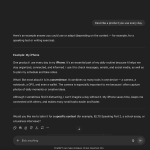Many employees express a strong preference for healthier workspace features—like wellness rooms, ergonomic seating, and sit-stand desks. Yet, these priorities are often neglected in office renovations, resulting in environments that can limit rather than support employee performance.
The design of an office significantly influences how employees feel and function. While a well-thought-out renovation can foster collaboration and improve morale, neglecting key elements like lighting, acoustics, and spatial layout can result in decreased productivity and satisfaction. Understanding common pitfalls in office design is essential to creating spaces that truly support and enhance the work experience.
1. Glass Placement That Disrupts Natural Light Use
Many office designs fail by overlooking how glass can make use of natural light. When glass walls or dividers are placed badly, they can cause glare, making it hard to see and work comfortably. This can lead to eye strain and distractions. Poor glass placement can also reduce privacy, making it harder for employees to focus or collaborate effectively.
Glass experts working on Atlanta glass solutions frequently recommend tinted or switchable panels to address these challenges. These options let in the right amount of light while keeping an open feel. Frosted glass, for instance, can soften harsh sunlight during peak hours without fully blocking it. They also support morale and help save energy, making the workspace both pleasant and efficient.
2. Acoustics Neglected in Open Concept Layouts
Open office layouts are popular because they’re meant to boost teamwork. But without good sound control, they often become too noisy. Loud environments can make it tough for employees to focus, which lowers productivity across teams. Even the sound of multiple phone conversations happening at once or keyboard clacking from several directions can create a mental strain over time.
Adding features that absorb sound, such as double-glazed windows or ceiling baffles, can make a big difference. Acoustic improvements help create a quieter space where employees can concentrate better and produce higher-quality work. Even placing soft furniture—like fabric chairs or wall-mounted panels—near high-traffic areas can reduce the sharpness of everyday office noise.
3. Over-Customized Design That Ignores User Behavior
Sometimes design choices focus too much on style and not enough on how people actually use the space. Furniture layouts that don’t match work habits can get in the way. For example, putting shared tables in far-off corners can disrupt team interaction, and overcrowded setups can make it hard to move or think clearly.
Paying attention to how employees use the space is key to making smart design decisions. Watching how teams work and asking for feedback leads to layouts that fit real routines. Even noticing where people naturally tend to gather—like near coffee machines or printing stations—can help shape areas that better reflect daily habits. When people feel their environment supports their work, they’re more likely to feel comfortable and involved.
4. Inefficient Zoning That Disrupts Task Transitions
Poor zoning makes workspaces feel chaotic. Mixing quiet areas with collaborative ones creates confusion. A noisy meeting beside a quiet desk can interrupt focus and cause frustration. For instance, a whiteboard brainstorming session with raised voices, laughter, and marker squeaks easily disrupts nearby individual work.
Effective zoning organizes space by function. Separating loud or warm zones from quiet ones supports smoother task shifts. Visual cues—like varied flooring or color-coded walls—can clarify each area’s purpose. With thoughtful zoning, employees move between solo and group work more easily, improving focus, comfort, and overall satisfaction.
5. Lighting Choices That Conflict With Circadian Rhythms
Lighting choices have a bigger effect on employee wellness than many people think. Old fluorescent lights, for instance, can throw off natural sleep and energy cycles. Their harsh glow can cause discomfort, making it hard to stay focused all day. In some offices, employees have even reported frequent headaches and dry eyes after just a few hours under this type of lighting.
Switching to modern LED lights is a better option. Energy-efficient fixtures can mimic natural daylight and be adjusted to suit each person’s workspace. Some systems even allow employees to control brightness and color temperature through a smartphone app or desk-side switch. With flexible lighting tailored to individual needs, companies can create a more pleasant and productive environment.
Office renovations shape how people feel and perform more than any furniture trend ever could. Ignoring lighting, sound, or spatial habits leads to frustration, not focus. Great design doesn’t require extravagance—it requires attention to how people truly use a space. Watch how teams move, where they pause, and what breaks their concentration. Then design around that reality. Spaces that reflect actual behavior create comfort, clarity, and stronger connection. Employees shouldn’t have to fight their environment to get work done. A thoughtful, responsive office layout can quietly support productivity, helping people feel better, think better, and do better throughout the day.
Lynn Martelli is an editor at Readability. She received her MFA in Creative Writing from Antioch University and has worked as an editor for over 10 years. Lynn has edited a wide variety of books, including fiction, non-fiction, memoirs, and more. In her free time, Lynn enjoys reading, writing, and spending time with her family and friends.















